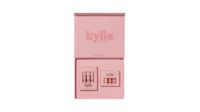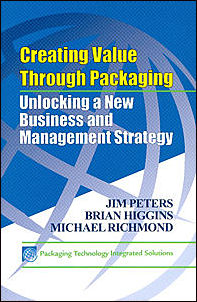Packaging's high points, low points and flashpoints
The ideas, issues and packages that transformed our (piece of the) world over the past 15 years.
The world is a very different place from when BrandPackaging came to be 15 years ago. And selecting the era’s most unforgettable moments and movements is no easy task. Nevertheless, the 15 ideas, issues and packages we highlight here reflect our unique viewpoint on the dramatic changes, and the high points, low points and flashpoints we’ve seen in marketing, branding, packaging and design.

Target’s Clear Rx is a powerful example of how package design can improve the healthcare experience and help patients avoid life-threatening errors.









The world is a very different place from when BrandPackaging came to be 15 years ago. And selecting the era’s most unforgettable moments and movements is no easy task. Nevertheless, the 15 ideas, issues and packages we highlight here reflect our unique viewpoint on the dramatic changes, and the high points, low points and flashpoints we’ve seen in marketing, branding, packaging and design.

Target's ClearRx prescription bottle is a powerful example of how packaging design can impact healthcare.
HIGH POINT: Target ClearRx: Design can change the world
A prescription medication near mix-up was the catalyst for this ingenious packaging system that features color-coded ID rings personalized for each member of the household. A single, wraparound label allows for larger print on the ClearRx bottle, which features a flat front to make the most important information accessible at a glance. The top of the package is also clearly labeled with the medication so that the bottle can be easily identified in a drawer.
Target’s Clear Rx is a powerful example of how package design can improve the healthcare experience and help patients avoid life-threatening errors.

Coca-Cola's fridge-pack was a seemingly simple innovation that made an early connection between packaging and consumption, and marketers took note.
HIGH POINT: Coca-Cola fridge pack: Convenience is king
In the era BFP (before fridge pack), late-night TV was replete with ads for clumsy plastic contraptions to stack, organize and dispense the pesky soda cans taking up space in your refrigerator. In 2001, Coke’s “fridge pack” changed all that, offering consumers a turnkey solution to their carbonated beverage storage needs.
The paperboard carton features a perforated snap-off corner and uses gravity to feed each successive can-creating a mini vending machine inside the fridge. Today, all of Coca-Cola’s core and developing brands use the format, and the company says the fridge pack continues to be its “core future consumption package.”
This seemingly simple innovation made an early connection between packaging and consumption, and marketers certainly took note.

Smart designers are thinking more and more about utility and accessibility, principles of universal design.
HIGH POINT: (Universal) design for all
With an aging Baby Boomer population approaching retirement and beyond, smart designers are thinking more and more about utility and accessibility, and they don’t plan to compromise on aesthetics to achieve those goals.
As its name suggests, universal design is not limited to seniors, or even those with disabilities. It is, simply, put, design without barriers. Today’s structural designers find themselves studying disciplines like kinetics and ergonomics in an effort to make everything from our hearing aid batteries (Duracell) to our mouthwash bottles (Listerine) easier and safer to use-and boosting usage frequency in the process.
HIGH POINT: One word: (bio)plastics
It might surprise you to hear that bioplastics have been around for decades. In fact, Henry Ford experimented with soybeans in the manufacture of automobiles as early as the 1920s. But the post-War petroleum-based-plastic boom derailed the idea until, of course, the pressures of diminishing resources and increasing waste came to bear.
In packaging, corn-based PLA has been used in countless applications that can be crediting for putting modern-era bioplastics on the map. And while PLA has seen some slowing, hounded by issues of recyclability within our current infrastructure, its early success has prompted plenty of green competition.
Coca-Cola has turned out a PET bottle that incorporates 30 percent plant-based materials and is recycled the same way as traditional PET, and Pepsi announced it has commercialized a 100 percent plant-based PET bottle, slated for introduction in 2012.
Clearly, we’re seeing a revolutionary generation of green plastics on the horizon.
HIGH POINT: Walmart keeps score
Walmart is notorious for pressing suppliers hard on pricing. So, when the retailer announced its plans to roll out a supplier packaging scorecard in 2006, you can bet there was a collective groan from the 60,000 suppliers who make up the ranks.
Because of its size and clout, Walmart has a unique opportunity to impact the environment (more so, some say, than the EPA), and the introduction of its scorecard was part of a plan to reach a five percent packaging reduction across its supply chain by 2013.
The scoring system debuted metrics, like product-to-packaging ratio and material recovery value, that made tangible what, up to then, had been an untethered idea of making packaging “less bad.” To accelerate implementation-and likely pacify the initial outcry-Walmart has also held annual expos to connect its suppliers with packaging vendors that have sustainable innovations to share.
The retailer reports that, as of the end of 2010, 627,000 items for sale in its stores and clubs have been entered in the scorecard-an increase of 90 percent over 2009.

Compact laundry detergent came to market in 2004 and, not longer after, Walmart transitioned all the liquid detergents on its US shelves to these compact versions. The category is a case study of what innovation can bring about and what leadership can bring to scale.
HIGH POINT: Compact laundry. Big impact.
Method pioneered the concept of compact laundry detergent containers when it introduced a triple-concentrated formula in a small bottle in 2004 (and one-upped that innovation with an 8x formula in a pump last year). Big laundry soon followed suit and, today, you’d be hard pressed to walk the laundry aisle and find any sign of those hefty jugs-what environmental advocates called the SUV of consumer products.
Much of the change can be credited to Walmart, which, as part of its sustainability goals, transitioned every brand of liquid laundry detergent on its US store shelves to concentrated, compact versions - an enormous trigger for CPGs who wanted to maintain the retailer’s lucrative account.
Today, the laundry category stands as a case study of what a culture of innovation can bring about (kudos to Method) and what leadership can bring to scale (hat tip, Walmart). It only begs the question, which category is next?

It's estimated that nearly half of the debris in the Great Pacific Garbage Patch is the result of consumer-used plastic that hasn’t been properly disposed.
LOW POINT: In the ocean. Plastic soup.
Though they’re not visible from space as many will have you believe, the Great Pacific Garbage Patch and others like it are massive, moving accumulations of plastic that are disturbing evidence of human activity. Here, bottlecaps, toothbrushes, detergent bottles, fishing nets and other castoffs can be found floating on the ocean surface, swirling below it and, sometimes, just sitting on the ocean floor.
It’s estimated that nearly half of this debris is the result of consumer-used plastic that hasn’t been properly disposed, and many are taking the issue up as a call to action for awareness and solutions that might help lighten the ocean’s plastic load.
The EU, for instance, is trialing a program that pays fisherman to engage in cleanup of the debris. There’s also the work of Method, which unveiled a PET bottle this fall, where 25 percent is made from plastic collected from the Pacific Garbage Patch. While the brand is hoping to collect enough usable ocean plastic to create a significant supply, the company’s co-founder Adam Lowry says “the ultimate goal is to raise awareness that the real solution to plastic pollution lies in reusing and recycling the plastic that’s already on the planet.”

PepsiCo started 2009 with redesigned packaging to its flagship Tropicana Pure Premium brand. But instead of accolades, the brand was met with frustration on the part of consumers, who found it difficult to shop on-shelf.
LOW POINT: Tropicana: A painful lesson in ROI
If ever there was a case study to illustrate the correlation between packaging and sales, it seems that Tropicana will be one for the marketing textbooks for some time to come.
PepsiCo started 2009 off by introducing a revolutionary new look (spearheaded by redesigned packaging) to its flagship Tropicana Pure Premium brand, the market leader with upwards of $700 million in sales. But instead of accolades, the brand was met with anger and frustration on the part of consumers, who not only didn’t like the new look, but found it difficult to shop on-shelf.
Within 60 days, sales had plummeted 20% and Tropicana relented and returned the original packaging to the shelf, apologizing for underestimating the “deep emotional bond” it evidently enjoyed with consumers.

In our zeal to harness technology to produce the ultimate convenience package, we may have stumbled. The Hillside Coffee - Wolfgang Puck partnership on a self-heating coffee cup is one instance. The catch? The packages had a tendency to explode.
LOW POINT: Brave new world?
There were times, in our zeal to harness technology to produce the ultimate convenience package, that we may have stumbled. And sure, it seemed like an awesome idea at first. Who wouldn’t be excited about a self-heating coffee cup?
In 2004, Hillside Coffee paired up with celebrity chef Wolfgang Puck to market gourmet coffee in a container that uses proprietary technology to heat its contents to 140 degrees F. The only catch? It seems the packages had a tendency to explode, and some also leached a strange white substance into the coffee inside. After repeated consumer complaints, the product was eventually recalled and Hillside has since gone out of business.

Individually wrapped peanut butter slices are an example of overpackaging, which has been easy pickings for eco activists and the scores of websites, blogs, Flickr pages and Facebook groups they've launched against the practice.
LOW POINT: Overpackaging
They come in varying shapes and sizes. Products that aren’t in right-sized boxes (an iPod Nano shipped in a printer-sized container, for instance). Perishables like prunes wrapped for individual consumption. Or, processed food that felt a need for an extra step (like peanut butter portioned into individually wrapped slices). All easy pickings for eco activists, who have launched scores of websites, blogs, Flickr pages and Facebook groups with the sole objective of shaming the perpetrators (and inventing rallying cries like ‘Aboxalypse’).
China and the UK have even taken matters into governmental hands, passing laws against excessive packaging. To be sure, there are good reasons for carefully packaged goods: product protection, theft deterrence or the frequently cited marketing “billboard” effect. But, surely, there has to be some logic in the process as well?

Sun Chips 100% compostable bag gets a solid A for effort, but the brand overlooked the "noise factor" ... the bag was LOUD. The lesson? Green is great, but don't overlook the consumer experience.
LOW POINT: Sun Chips compostable bag: The silence is deafening
Never before has the sound of a package gotten under our collective skin the way that Sun Chips’ new compostable bag managed to last summer. The brand gets a solid A for effort, introducing the world’s first 100% compostable chip bag made from PLA. Each compostable bag is designed to break down in 14 weeks when placed in a hot, active compost bin or pile.
The only catch? The bag was LOUD; we’re talking can’t-snack-and-hold-a-conversation-at-the-same-time loud, and consumers let the brand know in no uncertain terms. The second iteration, which registered around the “industry average” of 70 decibels, rolled out on specially marked bags of the brand’s Original flavor chips.
The lesson? Green is great, but a seamless experience with the packaging is critical to consumer adoption.

Packaging has come to exist in a heavily regulated age. And topics like Australia’s plain cigarette packaging law have become industry flashpoints.
FLASHPOINT: Regulation nations
Packaging has come to exist in a heavily regulated age. Consider Australia’s tough anti-tobacco laws that will force cigarette companies to sell in plain packaging beginning next July. Europe, China and the UK’s aggressive stance against overpackaging, with laws limiting the number of packaging layers and the relation of packaging to the size of the product. And extended producer responsibility laws in Europe and, increasingly, in the US holding manufacturers liable for the costs of managing packaging at the end of life.
Add to that the growing numbers of bottled water taxes and outright bans among municipalities, and you might scratch your head wondering whether this is a case of a ‘nanny state’ or ‘capitalism gone wrong.’
Add to that the growing numbers of bottled water taxes and outright bans among municipalities, and you might scratch your head wondering whether this is a case of a ‘nanny state’ or ‘capitalism gone wrong.’
It’s hard to say. UK regulators recently dropped what would have been a landmark case charging supermarket giant Sainsbury’s with excessive packaging (an odd target considering the retailer’s aggressive environmental advocacy programs) and the FTC recently backpedaled on its aggressive marketing to kids restrictions, which brands argued would have destroyed equity characters and wiped out all forms of advertising for many of their products. The only thing clear here is that things are exceedingly unclear.
FLASHPOINT: Clamshell: Frustration-free packaging?
If you want to engage a passerby in some stimulating conversation, ask him or her their thoughts on the much-maligned clamshell package. You’re guaranteed to hear a litany of complaints, possibly peppered with some colorful language, about how difficult they are to open. In some cases, you may be shown scars, produced by the various gadgets and tools they’ve used to try to open said package.
Yet despite being packaging public enemy #1, those of us who are familiar with packaging understand the many advantages-from a product protection and a theft deterrence standpoint-that clamshell offers. And manufacturers are not deaf to the complaints; they have been working hard to offer greener and easier to open versions of the venerable clamshell.
FLASHPOINT: BPA on trial
If there ever was a packaging flashpoint, bisphenol-A would surely be it. A chemical used in an array of consumer goods since the 1950s, BPA is now a mainstay in rigid plastics and in the protective liners inside food and drink cans. But it’s the chemical’s hormone-altering effects, which scientists have known about for decades, and its tendency to migrate into food, that’s causing all of the fuss.
So, when activists revealed BPA as a component in the plastic used to make baby bottles (polycarbonate), the former scientific debate spilled into a public forum and the consumer outcry was intense. As a result, the major baby bottle manufacturers phased out BPA, food companies like Heinz and ConAgra began trialing BPA alternatives and governments like Denmark and France restricted its use.
And while the question of whether BPA poses a health threat lacks a definitive answer, our sense is that, with the US EPA rethinking its stance, this controversy is hurtling toward a coming, forced resolution.
FLASHPOINT: Bottled water or tap?
The first documented case of selling bottled water was in Boston, in the 1760s, when it was sold by a spa for its therapeutic use. Marketing continued along those lines until recently, when bottled water became the target of eco activists who attempted to mark it as less a sign of healthfulness than just a lack of concern for the environment.
And while they made significant inroads, encouraging people to opt for tap water and pushing policy makers to enact taxes and, even, outright bans, the industry has fought back with a 32.6 percent reduction in gram weight for its single-serve 16.9oz bottles and with EPA figures that reveal bottled water accounts for just one-third of one percent of the US waste stream.
Nevertheless, we expect this debate will bubble on. BP
Looking for a reprint of this article?
From high-res PDFs to custom plaques, order your copy today!








